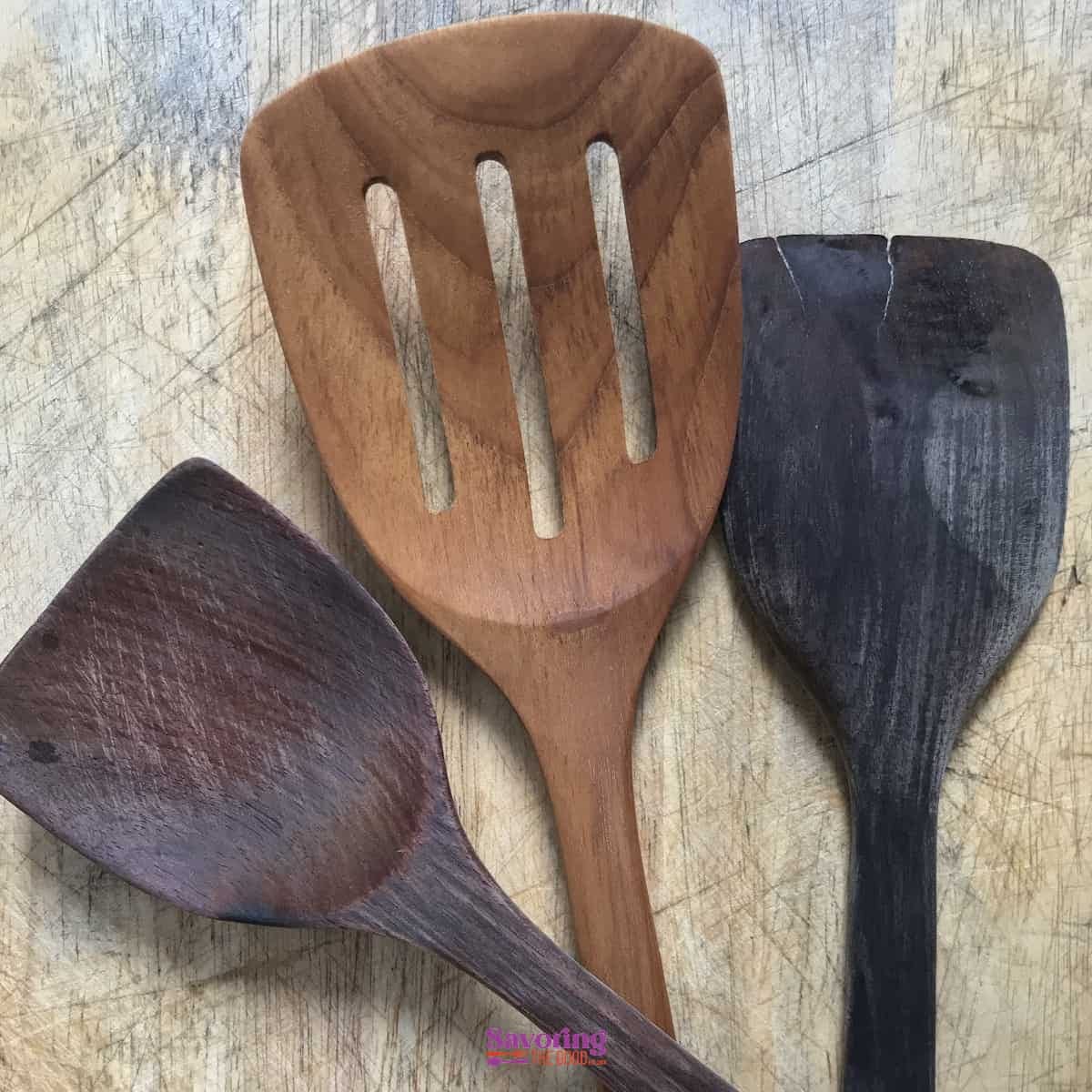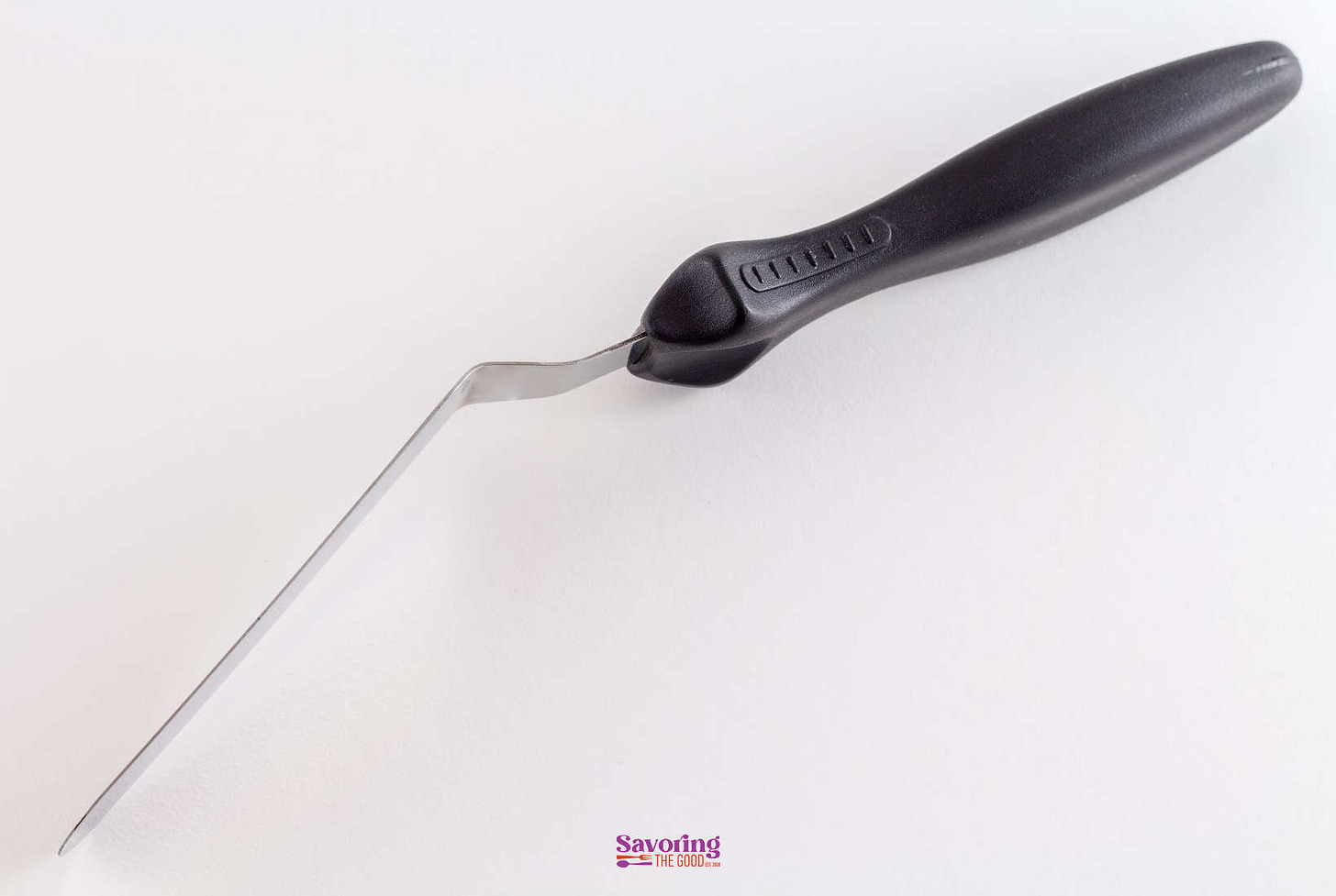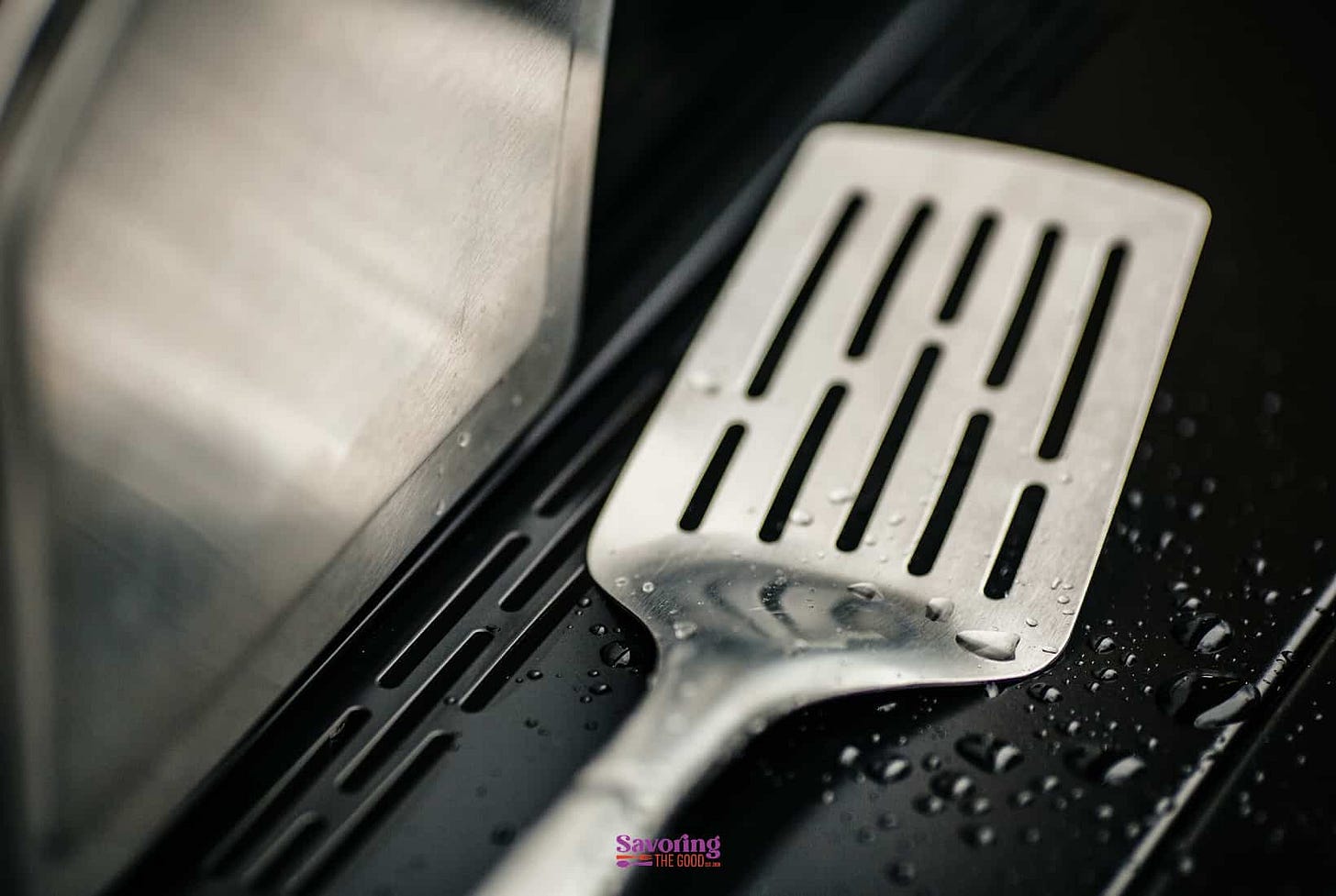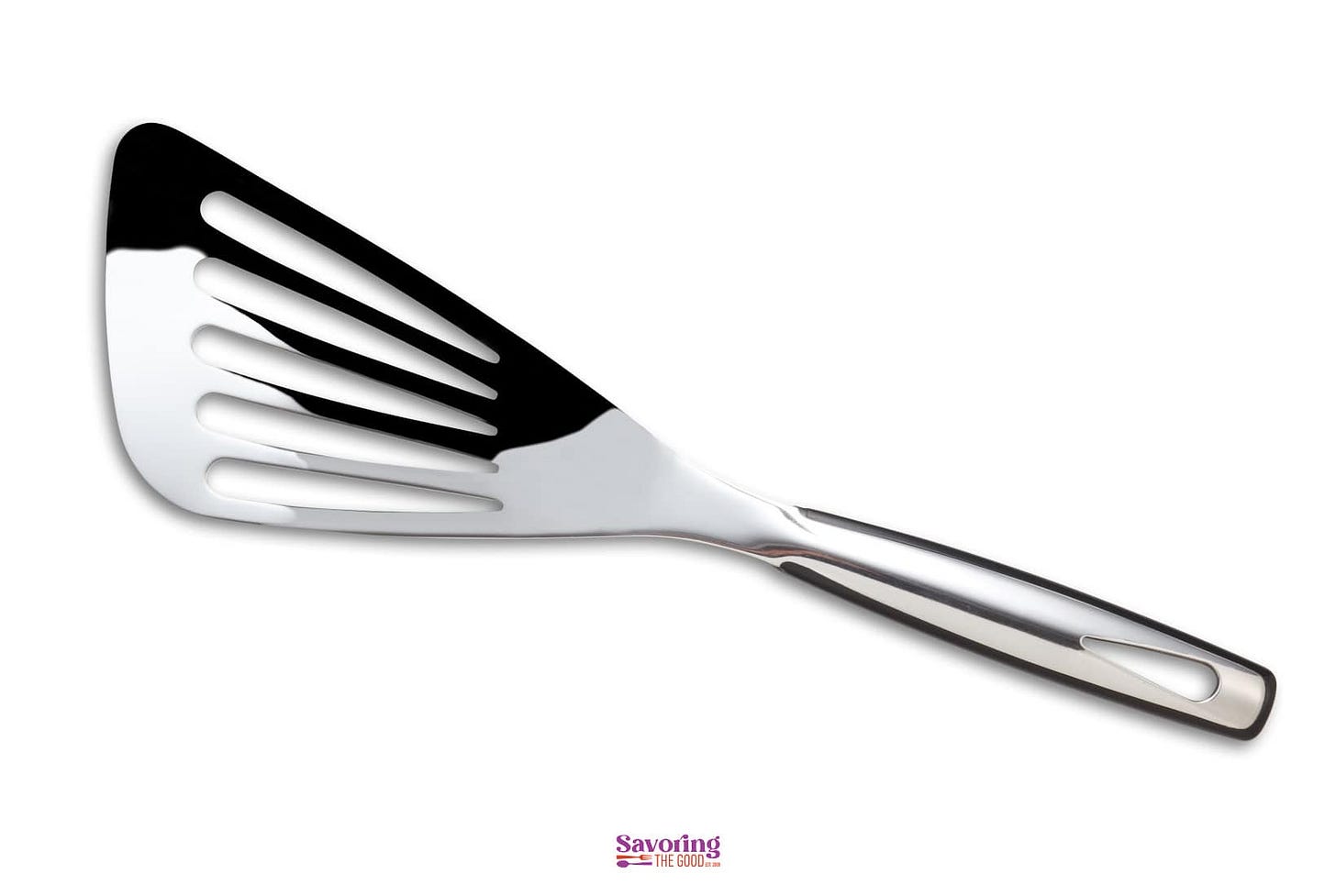Different Types Of Spatulas and Their Uses
As someone who has spent a lot of time in the kitchen, I can confidently say that spatulas are one of the most versatile kitchen tools you can have.
As someone who has spent a lot of time in the kitchen, I can confidently say that spatulas are one of the most versatile kitchen tools you can have. They come in a variety of materials and designs, each with its own unique benefits.
Spatulas can be made from a variety of materials, each with its own set of advantages and disadvantages.
Here are some of the most common material-based classifications:
Silicone spatulas: made from a heat-resistant, non-stick material that is perfect for use with delicate foods. They are also easy to clean every last bit from the mixing bowl and come in a variety of shapes and sizes, making them a popular choice for home cooks and professional chefs alike.
Metal spatulas: durable, heat-resistant, and come in a variety of shapes and sizes. They are perfect for use with heavy foods like meat and vegetables, but can also be used for delicate tasks like pancakes or crepes.
Kitchen spatulas: are typically made from plastic or nylon and are designed for general use in the kitchen. They are often used for mixing, stirring, as a scraper, and are typically heat-resistant and dishwasher-safe.
Design Variations
Spatulas are an essential tool in any kitchen, and choosing the right type can make all the difference. By understanding the different material-based classifications and design variations, you can select the perfect spatula for your needs.
Turner spatulas: the most traditional type and are perfect for flipping and turning food items in a pan. They have a long, narrow, and tapered blade that easily slides under fragile and hefty foods without causing them to fall apart.
Fish spatulas: a type of metal spatula that can be used to turn not only fish but also meat. They have a strong, rigid, flexible, and thin blade, making them perfect for flipping in tricky situations.
Flat spatulas: designed for spreading icing or other toppings on cakes and other baked goods. They typically have a long, flat blade that is perfect for smoothing and spreading.
Cake Spatula
Cake spatulas are long and flat, with a slightly curved edge. They are made of metal or plastic and are used for spreading batter evenly in cake pans or for transferring cakes from the pan to a cooling rack.
Frosting Spatula
Icing spatulas, also known as frosting spatulas, are used for spreading frosting or icing on cakes and cupcakes. They come in different shapes and sizes, with the most common being the offset. The offset spatula has a bent handle that keeps the user's hand away from the finished product allowing for a smooth and even spread.
BBQ Spatula
BBQ spatulas, also known as grill spatulas, are designed for flipping and turning food on the grill. They are usually made of metal with a long wooden handle, allowing the user to keep their hands away from the heat. They come in different shapes and sizes, with some having a serrated edge for cutting through meat.
Specialized Spatulas
When it comes to cooking, having the right tools is essential. Spatulas are no exception. While most can be used for a variety of tasks, some are designed for specific purposes.
Fish and Egg Spatulas
Fish turners and egg spatulas are designed with a thin, flexible stainless steel blade that can easily slide under delicate foods without breaking them. The blade is typically wider, making it easier to flip larger items like fish fillets or omelets. They are also great for removing cookies from a baking sheet without damaging them.
Slotted and Pancake Spatulas
Slotted spatulas are designed with slots or holes in the blade. This allows excess liquid to drain away, making them ideal for flipping burgers or steaks. The openings also make it easier to remove food from a pan without taking excess oil or sauce with it.
Pancake spatulas are similar, but they are designed with a wider blade that is perfect for flipping flat foods. The wider blade also makes it easier to slide under larger items like quesadillas or grilled cheese sandwiches.
Selecting the Best Spatula
When it comes to selecting the right spatula, there are a few factors to consider.
Purpose
Are you flipping flapjacks? Scrambling eggs? Sautéing vegetables? Each of these tasks requires a different type. As my Chef instructor would tell me: 'Use the right tool for the right job'.
Material
The material is another important factor to consider. There are several materials to choose from, including silicone, rubber, metal, and wood. Silicone and rubber are great for non-stick cookware, while metal is better for high-heat cooking. Wood spatulas are ideal for getting into the corners of pots.
Comfort
The comfort of the spatula is also an important consideration. Look for one with a comfortable grip that is easy to hold.
Spatula Care and Maintenance
Clean after each use. Use warm, soapy water to clean the spatula, and dry it thoroughly.
Avoid using abrasive cleaners or scrubbers, as they can damage your tool.
Store your in a dry place, away from heat and moisture.
If dishwasher safe, you can clean it in the dishwasher. However, hand washing is always the best option.
By considering the purpose, material, and comfort of the spatula, and taking care of it properly, you can ensure that your spatula will serve you well for years to come.
Spatula vs Turner
The terms "spatula" and "turner" are often used interchangeably, but they refer to two different types of kitchen utensils. A spatula is a broad, flat utensil with a long handle, while a turner is a narrower, more tapered utensil that is used for turning food in a pan or on a griddle. When selecting a spatula or turner, consider the type of cooking you will be doing to determine which utensil is best for your needs.
Professional and Home Use
As a professional chef, I have used many different types of spatulas in my career. However, there are a few types that I would recommend for both professional and home use.
Baking Spatula: A baking spatula, also known as an offset spatula, is a must-have for any pastry chef or baker. This spatula has a long, narrow blade that is offset from the handle, which allows you to easily spread frosting, batter, or dough in a smooth and even layer. It is also great for lifting delicate pastries or cookies off of a baking sheet without damaging them.
Spatula Turner: A spatula turner, also known as a flipper or turner, is a versatile tool that every chef should have in their kit. It has a broad, flat blade that is perfect for turning food in a hot pan, such as eggs, or burgers. It is also great for transferring food from the pan to a plate or serving dish.
Best Practices for Home Cooks
Choose the Right Spatula: When selecting a spatula for home use, consider the type of cooking you will be doing. If you plan on doing a lot of baking, invest in a good quality baking spatula. If you plan on cooking a lot of meats or vegetables, a spatula turner is a great all-purpose tool to have.
Use the Right Technique: When using a spatula, it is important to use the right technique to avoid damaging your food or your cookware. When turning food in a pan, slide the spatula under the food and lift it up gently, rather than trying to scoop it up. This will help prevent the food from breaking apart or sticking to the pan.
Maintain Your Spatula: To keep your spatula in good condition, clean it after each use with warm, soapy water and a soft sponge. Avoid using abrasive cleaners or scrubbers, as these can damage the surface of your spatula. Store your spatula in a dry place to prevent rust or corrosion.
Frequently Asked Questions
What are the advantages of using a silicone spatula over other materials?
One of the most significant benefits of using silicone is that it is gentle on non-stick cookware. Silicone does not scratch or damage the surface of non-stick pans or bowls. Silicone is also heat-resistant, making it safe to use in high-temperature cooking and baking.
How does a slotted spatula differ from a solid one in its use?
A slotted spatula has spaces or holes in the head, allowing liquids and oils to drain away from the food. This makes it ideal foods that release a lot of liquid, such as fish and vegetables. A solid spatula, on the other hand, is better suited for flipping and turning foods that are dry or have a minimal amount of liquid.
What characteristics should I look for in a spatula when cooking with non-stick pans?
When cooking with non-stick, it is essential to choose one that will not scratch or damage the surface. You're looking for a spatula with a soft, non-abrasive head, such as silicone or nylon. The spatula should also have a smooth edge to not scrape or scratching of the non-stick coating. Additionally, make sure the spatula is heat-resistant and can withstand high temperatures without melting or warping. A wooden spatula or rubber spatula is naturally non-slip.
What is the best type of spatula to use for flipping eggs without breaking them?
When it comes to turning eggs, a flexible spatula is the best choice. Look for a spatula with a thin, flexible head, such as a fish spatula.
How does an offset spatula enhance the decorating process in baking?
An offset spatula is a baking tool with a long, narrow blade that is angled at the handle. The offset design allows the spatula to reach into tight spaces and angles, making it easy to spread frosting and other toppings evenly. The blade is also thin and flexible, allowing for precise control when decorating cakes and other baked goods.
Different Types Of Spatulas and Their Uses originally appeared on Savoring The Good.com







